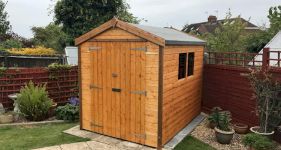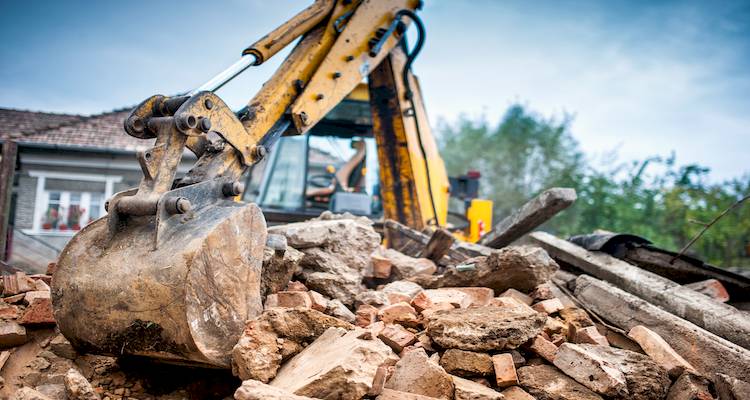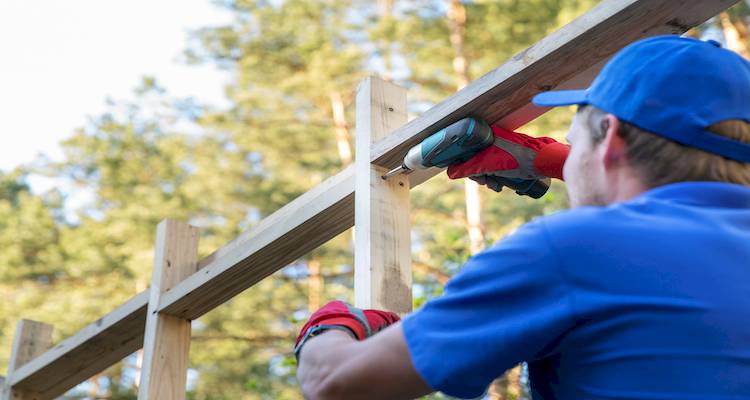Rear Extension Cost
- The average cost of a rear extension is £40,000.
- The job typically takes 12 to 16 weeks to complete.
- Clear rear extension cost breakdowns by size, spec, and type.
- What impacts the prices you're quoted by builders.
- Project timelines, with a step-by-step look at what's involved.
- Simple rear extension cost calculator to quickly estimate costs.
- How to find local builders using MyJobQuote.
Wondering how much a rear house extension will cost?
Rear extensions cost between £30,000 to £100,000 to build. The exact price mainly depends on the size, finish, and whether you want a single or double-storey design.
That's why we've created this guide — to help you narrow down how much a rear extension is likely to cost in your case.
Most people get extension quotes early, even if they're just exploring their options. It's a normal first step to see what's realistic.
With MyJobQuote, you can quickly get quotes from builders near you. It's quick and free, with no pressure to go ahead.
Find our full rear extension cost guide below!
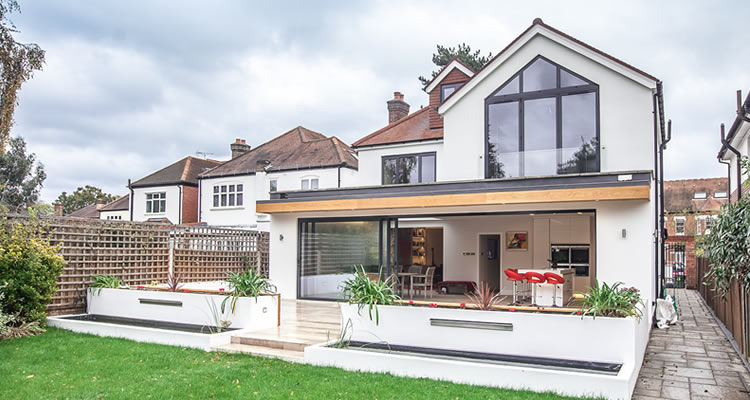
£40,000
Table of Contents
- How Much is a Rear Extension?
- Labour Cost of Rear Extension & Timescales
- Rear House Extension Supply Costs
- Additional Rear Extension Costs
- Factors That Impact Rear Extension Costs
- What's Involved in Building a Rear Extension?
- Do I Need an Architect for a Rear Extension?
- Can I Build a Rear Extension Myself?
- Choosing a Rear Extension
- What Are The Benefits of a Rear Extension?
- Will a Rear Extension Increase the Value of My Home?
- Can I Have a Rear Extension?
- Planning Permission for a Rear Extension
- Building Regulations for a Rear Extension
- Rear Extension Flooring Cost
- Keeping Extension Costs Low
- Cost of Rear Extension Alternatives
- Checklist: Hiring Rear Extension Contractors in the UK
How Much is a Rear Extension?
How much do house extensions cost?
When planning an extension, one of the hardest things to do is come up with a budget. You can scroll down and use our rear extension cost calculator below to get an estimated cost, but here's what you need to know in general:
- A single-storey extension costs between £30,000 and £40,000.
- A double-storey extension costs between £40,000 and £50,000.
- A wraparound extension costs between £50,000 and £100,000.
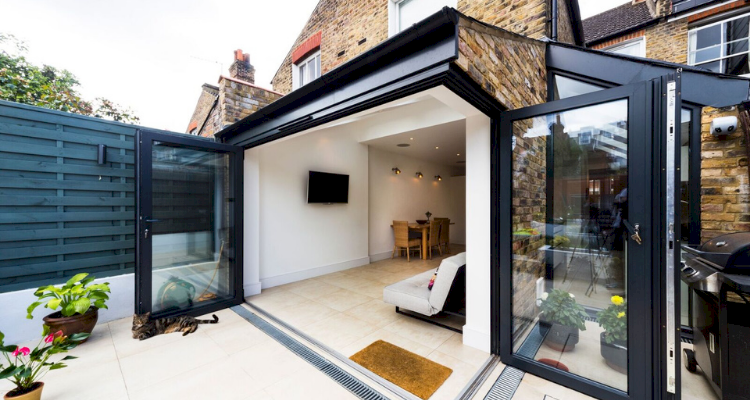
There are a lot of factors that can affect the rear extension costs, but the main ones are the size of the extension, the type of extension, and the finish - the latter of which can more than double the costs if you've opted for high-quality finishes throughout.
What's the cheapest way to update a sunroom attached to the rear kitchen? It was added as an extension, and the original window was left to let light into the kitchen. How can I modernise it?
Rear Extension Prices
Average Rear Extension Prices
Let's take a closer look at the costs you can expect to pay during your extension project, starting with cost based on the type of extension first:
| Type of Extension | Average Cost |
|---|---|
| Single-storey | £30,000 – £40,000 |
| Double-storey | £40,000 – £50,000 |
| Wrap-around | £50,000 – £100,000 |
Single-storey extensions are the most affordable, while double-storey and wrap-around extensions require more structural work, which increases their costs.
Choosing the right extension type is based solely on your needs: if you want extra living space or a larger kitchen, a single-storey extension will be your best choice, but if you want an extra bathroom and bedroom, a double-storey extension will be better suited.
As with all home renovation jobs, the type of finish you choose will impact the price you pay, as will your location and whether or not your builders have good ease of access to the site.
Rear Extension Prices Per M²
Now, let's consider the price per m² for these different extension types:
| Type | Basic finish (per m²) | Good finish (per m²) | High finish (per m²) |
|---|---|---|---|
| Single-storey | £1,000 – £1,700 | £1,700 – £1,900 | £1,900 – £2,200 |
| Double-storey | £950 – £1,500 | £1,500 – £1,850 | £1,850 – £2,200 |
| Double-storey + loft | £900 – £1,300 | £1,300 – £1,750 | £1,750 – £2,200 |
An interesting point to note is that the cost per m² decreases with additional storeys, as the second floor shares the same foundations as the base floor and will share the same roof, reducing further costs.
This is why a double-storey extension with a loft conversion is the most cost-effective per m² when compared to a single-storey extension.
These costs include standard fittings and finishings but will fluctuate depending on your chosen style.
Extension Cost Calculator
Labour Cost of Rear Extension & Timescales
Labour costs and timescales will vary depending on the extent of the work involved in building your rear house extension.
Here's a brief overview of what you can expect:
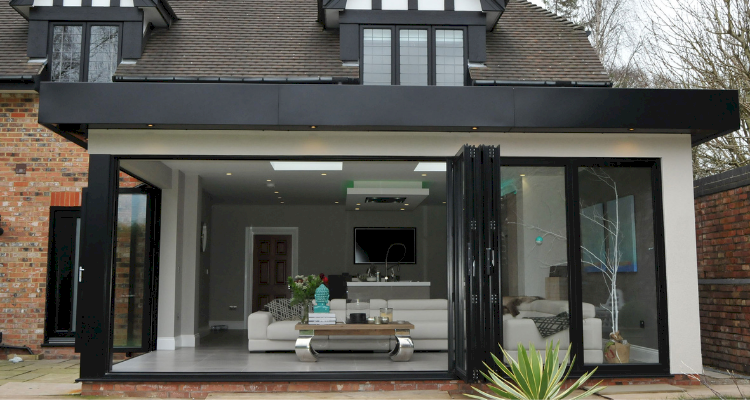
Labour Costs and Timescales Based on Type of Extension
| Type of Extension | Duration | Average Labour Costs |
|---|---|---|
| Single-storey | 11 – 13 weeks | £18,000 – £22,000 |
| Double-storey | 15 – 18 weeks | £28,000 – £30,000 |
| Wrap-around | 10 – 14 weeks | £28,000 – £60,000 |
Cost Per Hour of Different Tradesmen
| Tradesman | Average Cost Per Hour |
|---|---|
| Builder | £20 – £35 |
| Tiler | £20 – £40 |
| Plumber | £35 – £45 |
| Electrician | £50 – £90 |
| Plasterer | £30 – £50 |
| Decorator | £20 – £50 |
| Joiner | £35 – £45 |
| Roofer | £30 – £40 |
| Kitchen Fitter | £25 – £40 |
Rear House Extension Supply Costs
Rear Extension Windows Cost
| Type of Window | Size (cm) | Average Cost |
|---|---|---|
| Velux | 98 x 78 | £325 - £375 |
| Velux | 140 x 78 | £400 - £450 |
| Velux | 180 x 78 | £500 - £550 |
| uPVC | 60 x 90 | £250 - £400 |
| uPVC | 90 x 120 | £400 - £600 |
| uPVC | 120 x 120 | £650 - £900 |
Rear Extension Bathroom Cost
| Fixture | Average Cost |
|---|---|
| Bath | £80 – £500 |
| Shower | £60 – £1000 |
| Shower Enclosure | £100 – £550 |
| Toilet | £50 – £500 |
| Sink | £50 – £300 |
| Taps | £50 – £100 |
Rear Extension Kitchen Cost
| Item | Average Cost |
|---|---|
| Units with doors and handles | £3,200 – £5,500 |
| Worksurfaces | £200 – £2,000 |
| Appliances | £1,500 – £5,000 |
Rear Extension Lighting Cost
| Type of Lighting | Average Cost |
|---|---|
| Pendant/chandelier | £40 – £100 |
| Simple ceiling or wall lamp | £40 – £60 |
| Recessed spotlights | £80 – £110 |
| Dimmable ceiling or wall lights | £80 – £100 |
Rear Extension Heating Cost
| Type of Heating | Average Cost |
|---|---|
| Traditional radiator | £60 – £150 |
| Electric radiator | £150 – £300 |
| Underfloor heating | £100 – £150 per square metre |
Rear Extension Flooring Cost
| Type of Flooring | Average Cost per square metre |
|---|---|
| Vinyl | £7 – £20 |
| Wood | £17 – £70 |
| Carpet | £4 – £40 |
Additional Rear Extension Costs
Unexpected costs can crop up whenever you get extensive work done on your home. Some of these additional costs can come from the choices you make about your extension, whereas others come from the existing condition of your home.
Here's what you should bear in mind when calculating your house extension budget:
Structural Engineer Cost
Structural engineers differ from architects but work closely together, with engineers focusing on the stability of structures and their adherence to building regulations. Structural engineers cost from £400 to £4,000, depending on the complexity of the work, but are an integral part of the building process.
If your construction requires the use of any reinforced steel beams or shifting of load-bearing walls, you will need the services of a structural engineer.
House Rewire Cost
When you're getting your extension built, you're likely to encounter the cost of small electrical upgrades - such as adding in new sockets to your extension, adding light fixtures and switches - but, you may also come across larger, more extensive (and expensive) problems.
More electrical sockets and lights mean more electrical load - and if your electrician inspects your current system and thinks it won't be able to handle the extra demand, they may suggest you need a complete rewire to meet current electrical safety standards.
Unfortunately, a full house rewire costs, on average, £4,000. This is most likely for older properties that haven't had their electrics touched in a long while, however, so if you've recently had work done and encountered no extra load issues, you're unlikely to need to budget for this extra cost.
On a smaller scale, if it's simply a case of your existing consumer unit not having the capacity to cater for your new electrical fittings, you may need a new consumer box. Prices for consumer units average around £500 depending on make and model.
New Boiler Cost
If your extension includes any new plumbing - such as a toilet, a full bathroom, or a brand new kitchen - you might need to invest in a new boiler if your current model is undersized for this additional demand. This might also be the case if you have an old boiler nearing the end of its lifespan.
In these cases, your heating engineer may suggest you need a new boiler fitted to mitigate these issues. To do so, the average cost to install a new boiler is between £1,500 to £2,500, depending on the efficiency of the model and the size.
Heating Options for a Rear Extension
Deciding how to heat your new extension is a big choice. The simplest route? Add new radiators to your existing central heating system. Is your boiler not powerful enough to cope with the extra load? It's worth investing in a new boiler instead.
Radiators aren’t your only option, though. Another popular option among homeowners is underfloor heating. It frees up wall space, and can be a whole lot more energy-efficient in the long run. You can get your hands on Water-based and electric systems for between £800 up to £7,700. But this depends on what sort of system you have and how big or small your room is.
Removing or Relocating Drains Cost
Depending on where the extension is located in comparison to your existing drains, you might need to remove or relocate your drains. To check if it is necessary, you may need to budget for the cost of a drain survey - £250 - so a drain specialist can advise on the best solution.
You're likely to encounter this extra cost if you're building close to existing drains or drain lines - especially if they're close to the extension foundations, as this could cause subsidence. Depending on how complex the drain layout is, and how deep the system is, you can expect costs of £200 to £1,300 to move a drain.
Underfloor Heating Cost
Underfloor heating is a luxury, but it can also be incredibly energy-efficient and space-saving if you want to keep your extension clear of heating clutter, such as radiators. The cost of underfloor heating can be anything from £800 to £7,700 depending on the type of system you choose and the scale of the area.
It can also be a cost-saving hack if your current heating system isn't adequate for your extension. If you choose a water-based system, you will still need your boiler to heat the water. But if you choose an electric system instead, you can run this entirely via electrical cables, mitigating the need to upgrade your boiler if your existing system isn't sufficient.
Adding a Kitchen Cost
Rear extensions are often built to create a bigger kitchen. Many older homes have cramped kitchens, so adding more space is usually the number one reason people extend at the back of the house.
To do this, you'll need to spend an extra £3,000 to £10,000 to cover the cost of the kitchen installation, as well as appliances, cabinets, doors, and worktops.
When installing a new kitchen, be mindful of your existing plumbing, heating, and electrics. Also, don't forget to factor in any necessary system upgrades if your original fittings can't take the extra demand.
Adding a Bathroom Cost
A simple downstairs toilet costs £100 to £200 - but, if you're thinking of adding this to your rear extension, you'll need to ensure your budget allows for extra plumbing fees and any necessary drainage fees so that everything connects and works as desired.
If you're planning a larger project, such as adding an entire bathroom to your extension, you'll also need to bear these things in mind. For the cost of installing a new bathroom alone, you should add on £2,000 to £6,000 onto the price for your extension, which will cover labour costs as well as the supply of a bath shower, toilet, and tiling.
Bear in mind that the bigger the project, the more likely it is that you'll need to carry out some additional plumbing work to ensure the water supply is sufficient.
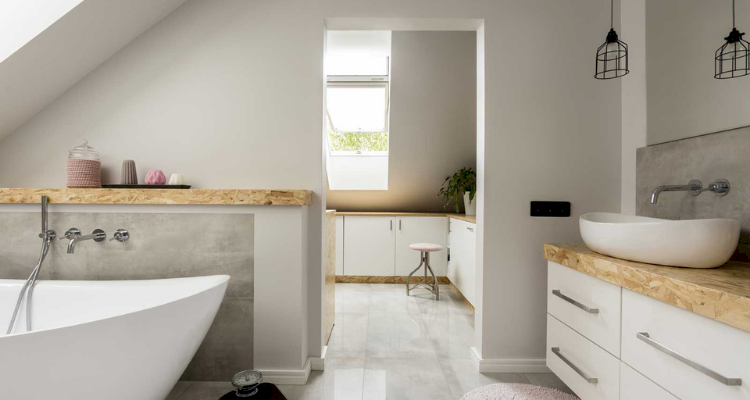
Adding a Utility Room Cost
Utility rooms can be welcome additions to any home, providing a place to keep laundry and other household jobs out of the way. Depending on the exact spec of your utility room, you can expect to budget for an extra £3,500 to £7,000 for the cost of utility room installation.
These costs can increase with the volume of appliances you want added to the room. For example, if you want to include plumbing points for a sink and a washing machine, that will cost extra and calculate the additional energy load for a dryer.
Site Survey Cost
To mitigate potential problems during construction, it is a good idea to get a full survey done of the site, the land, and the existing property. Surveys are critical if you haven't updated your house in a long time or bought it without taking out a house survey and aren't sure if the previous owners had existing extensions done correctly.
The average cost of a house survey is around £600 to £1,400. Although it can seem like an unnecessary extra expense if the survey comes back showing nothing of note, it can help to save you spending on unexpected costs during the extension project - and by that time, problems are likely to be urgent and will cost more than a routine check-up would.
Architect Cost
If you're unsure where to start with your rear extension but have an idea you want someone else to bring to life, hiring an architect to produce plans can be a great way of making your ideas come to life.
Typically, the cost of an architect will make up 7 to 15% of the total cost of the extension, and getting planning drawings done usually costs between £2,500 to £3,000. Architects are particularly helpful if you're planning a multi-storey extension with lots of open space, and they can advise on the best placement of windows and doors to utilise available natural light to help make an enjoyable living space.
Planning Application and Building Regulations Cost
Extending your home? You may need planning permission. In England, the current householder planning application fee is £258 per application (fees differ in Wales, Scotland and Northern Ireland). Check local validation requirements before you submit.
Once built, your extension must comply with building regulations. Building control charges are set by your local authority or building control approver and typically total several hundred pounds for an extension (covering plan checks and inspections). The exact amount varies by project and provider.
Insurance Cost
You should take out an insurance policy on your home if you're planning on moving out while the work is taking place. This is because your existing home insurance might not cover damage or theft while you are not actively living at the property.
The best solution in these cases is to take out an insurance bundle to cover the employer’s liability, public liability, and construction, which usually costs around £500 to £800.
Factors That Impact Rear Extension Costs
When you get an extension done, there are a lot of factors that can affect the cost. With many big projects, few costs are fixed, like the cost of a roof and foundation. It is all the other decisions that you make that have the biggest impact on the final budget.
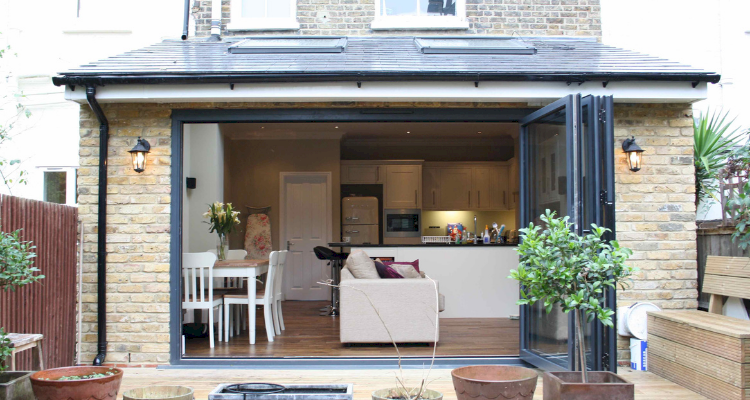
Size of Extension
Unsurprisingly, the bigger your extension is, the more it will cost. However, your cost per m² of space will decrease if you build over more than one floor.
Type of Extension
This is somewhat tied into the size of your extension, but generally speaking, a single-storey extension is the cheapest option, a double-storey extension is more expensive, and the costliest option is a wrap-around extension.
If you're considering an extension in a different part of your house - garage or loft being popular choices - your costs will differ. Loft conversions cost around £40,000, while garage conversions can be anywhere from £7,000 to £20,000 for a single garage conversion, up to £15,000 to £55,000 for a double garage conversion.
To put that into context, let's compare the cost per m² for these different conversion and extension styles:
- Single-storey rear extension costs are around £1,000 to £1,700 per m² for a basic finish.
- Double-storey rear extension costs range from £950 to £1,500 per m²
- Loft conversion costs per m² range from £1,000 to £3,000, depending on the conversion style.
- Garage conversion costs range from £400 to £700 per m² for an average-sized integral garage, while detached garages are closer to £1,000 to £1,600 per m².
Quality of Finish
Once you have the basic extension built, you will need to make a decision about the finish. Things like flooring, kitchen units and bathroom fittings. The quality of those that you choose will have a huge impact on the final cost. If you decide to go for all bespoke fittings and expensive materials, you can end up doubling your final price.
What's Involved in Building a Rear Extension?
Building a rear extension is by no means a quick task. Neither is it one for DIY. The job itself entails everything from digging foundations to fitting electrics. So, a lot of folk usually hire an experienced builder or project manager to take care of it.
Trying to do it all yourself? Not that realistic. Plus, you’ll need local tradespeople for certain parts, like plumbing and electrics, to make sure your new extension meets building regulations.
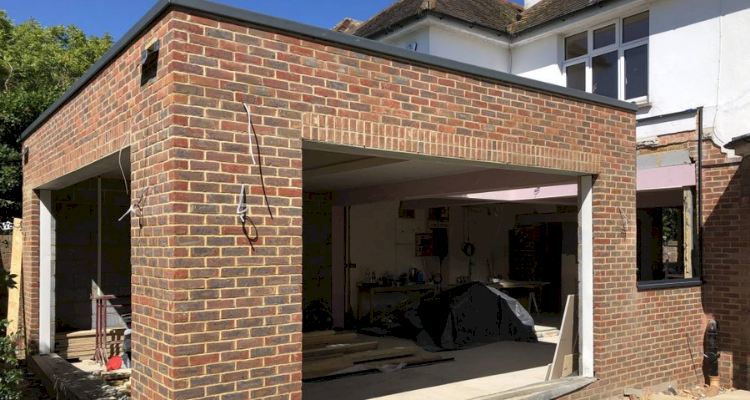
It’s perfectly natural to get multiple quotes from local builders before you commit. With MyJobQuote, you can very easily compare rear extension prices from local builders. Quotes are free, fast, and there’s no obligation to go ahead.
But do you know exactly what goes on during the build?
Take a look at what’s involved when professionals put up a typical single-storey rear extension (add on around 3–5 weeks extra for a double-storey project):

Before Work Begins
- Site prep and surveys — The builders will take a look at the ground, drains, and access. Any problems are identified early.
- Planning and approvals — If planning permission or building regs approval is necessary, project managers submit drawings and paperwork.
- Marking out — They’ll mark the footprint of your new extension so the diggers know exactly where to start.
Weeks 1–2: Groundworks and Foundations
First up is the heavy lifting. The site gets dug out, footings are poured, and (if needed) drains are fitted or diverted. Even though this stage is messy, it sets the base for everything that comes next.
Weeks 3–6: Floors and Walls
- Concrete base and damp-proof course — Prevents moisture getting up into your new rooms.
- External walls — Brickwork or blockwork starts to climb, tied into your existing house.
- Insulation — Cavity wall insulation is added as the walls go up.
- Internal walls — Stud walls and partitions are built to create your chosen layout.
Weeks 7–10: Roof, Windows, and Doors
The roof structure is built, roof coverings fitted, and any skylights prepped. Once that’s watertight, windows and doors go in. At this stage, your extension looks like a proper room from the outside and the internal work can speed up.
Roof options: For single-storey extensions, both flat and pitched roofs work well. Flat roofs keep build height and cost down and make it easy to add rooflights. Pitched roofs blend with traditional homes and can look smarter from the garden. Want more natural light? Skylights or roof windows work brilliantly during this stage so the openings are built in from the start.
Weeks 11–13: First Fix and Plastering
- First fix electrics and plumbing — Wiring, pipes, and carpentry foundations go in before walls are sealed.
- Knock-through — The builders open up the old external wall to join your new extension to the house (usually a dusty, noisy job).
- Plastering — Walls are skimmed, ready for decorating once dry.
Weeks 14–15: Second Fix and Finishing Touches
Electrics, plumbing, and carpentry are complete. Flooring goes down, kitchens and bathrooms are erected, and any final obstacles are dealt with. This is the stage where your extension transforms into a usable part of your home.
After the Build
- Final checks — Builders walk you through the work, noting any pressing problems that need sorting out.
- Building control sign-off — Inspectors confirm everything meets building regulations before issuing a completion certificate.
- Move in — Once certified, you can start decorating, furnishing, and enjoying your new space.
Do I Need an Architect for a Rear Extension?
You do not have to have an architect to build an extension. However, it is a good idea to think about using one. Although it can be a little pricey to hire an architect, it can actually make the whole project cheaper.
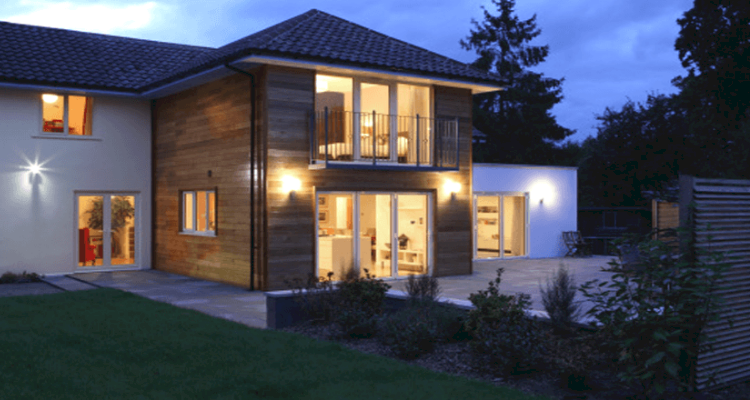
When you have full plans drawn up, you are in clear agreement with your contractors about what the finished product will look like. This prevents changes mid-build and can prevent unforeseen problems.
Some builders may not want to complete the project if an architect has not been involved, whereas others will be happy to complete the work without one. You will need to discuss this with any builders you consider hiring.
Can I Build a Rear Extension Myself?
Building an extension is a big job with a lot of different skills required. Unless you are a professional builder, it is probably not a project you should attempt to DIY. This is especially true of electrics.
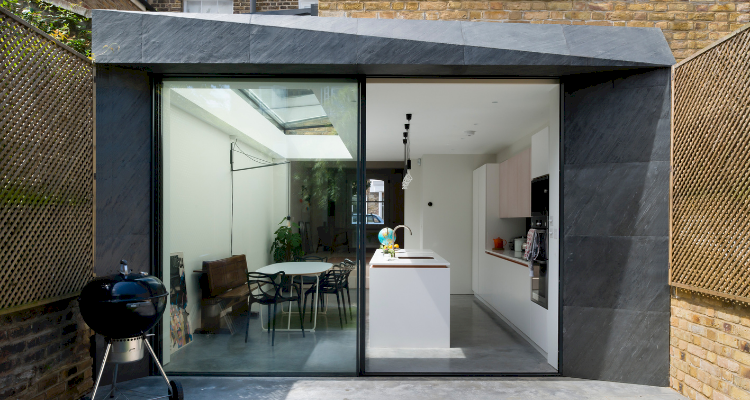
There are parts of the project that you may be able to complete yourself to keep costs down. Easier aspects of the work include decorating, installing kitchen units, laying flooring and tiling.
If you wish to complete some of the work yourself to keep costs down, you should communicate clearly with your lead contractor. They will need to plan when all the work is done, so they need to know what you intend to do and when you will be doing it. It is best to have these conversations early on.
Choosing a Rear Extension
When it comes to a rear extension, you have three main options. A single-storey extension, a double-storey extension or a wrap-around extension.
Single Storey Rear Extension Cost
A single-storey rear extension can be used to extend an existing downstairs room or add an extra room to the house. The average cost for this type of extension is £30,000 to £40,000.
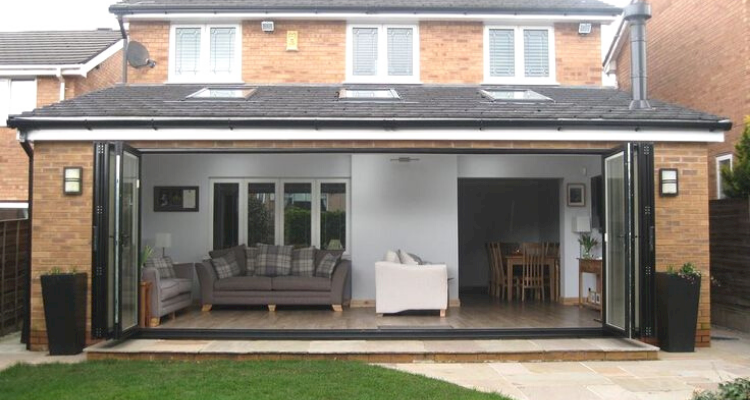
Pros
- ✔ Can cause minimal disruption
- ✔ Can easily add skylights to minimise lost light
Cons
- ✖ Can make interior rooms darker
- ✖ Only gives a small amount of extra space
Double-Storey Rear Extension Cost
These extensions add on at both ground and first-floor levels. This usually allows for an extra bedroom and/or bathroom, along with space for a new kitchen. The average cost for this is £40,000 to £50,000.
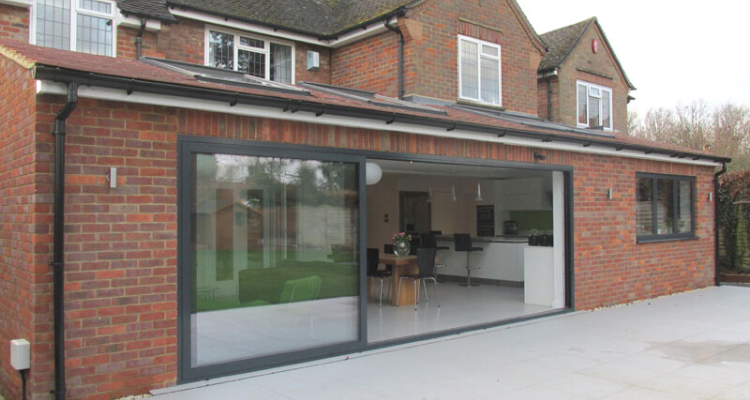
Pros
- ✔ Gives the most extra space
Cons
- ✖ Big project
- ✖ Can make interior rooms darker, especially downstairs
Wrap-Around Rear Extension Cost
A wrap-around extension is one where you are adding on to both the back and side of your home. It adds an extra "L" shaped living area to your home. The average cost is £50,000 to £100,000.
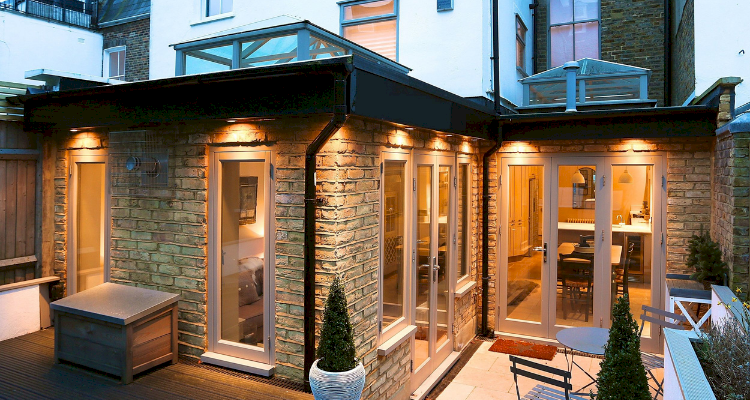
Pros
- ✔ Get a larger area without sacrificing as much garden space
- ✔ Can increase the amount of light in your downstairs living areas
Cons
- ✖ Much bigger project
What Are The Benefits of a Rear Extension?
Increase Value of Property
The more space there is in your home, the more it is worth. Most extensions will add more value to a home than you spend on getting them done.
More Space
The main reason to get an extension built is to increase the space in your home. You can add extra rooms or extend existing ones. Either way, you will have more space to live.
Don’t Have to Relocate
When a family is growing, homes can begin to become crowded. An extension can provide you with extra space without the need to move and uproot your lives.
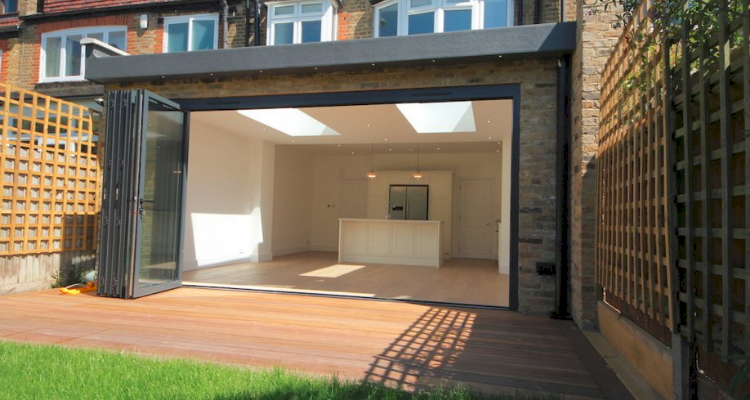
Updated House
Adding an extension will allow you to rearrange your home so that it has a more modern layout and spacing. Homes can feel dated depending on how they are arranged. An extension is an opportunity to change the feel of your home.
Brings More Natural Light into Home
Building an extension gives you opportunities to allow more natural light into your home. It is possible to do the opposite if care is not taken. However, if you take the opportunity to add windows and consider the layout, your home will feel brighter.
Adds a Link to the Outdoor Area
A well-conceived extension can join your garden to your home. With considered use of glass, you can create a bridge between the two spaces. Doing this can make your home feel even larger, and it can increase the usefulness of your garden.
Will a Rear Extension Increase the Value of My Home?
Adding extra space to your home is a great way to increase its value. Adding a rear extension can add, on average, £59,000 to the value of your home. This figure will vary depending on the size of the extension and the location of your home. For instance, in the south of England, an extension will add more value than in the north.
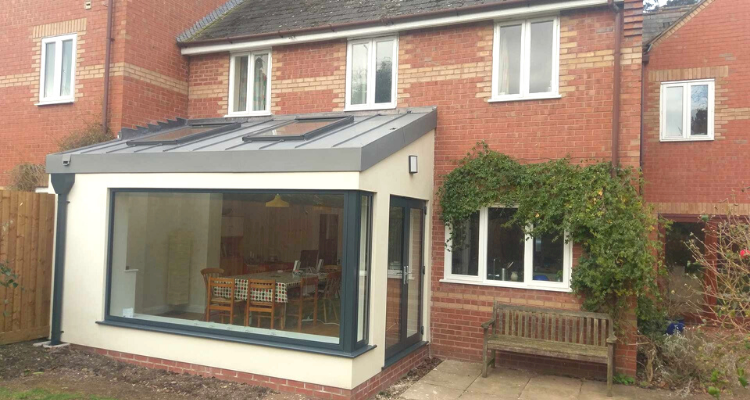
Can I Have a Rear Extension?
In order to get a rear extension, you need to have space for one. The more space you have at the back of your home, the bigger the extension you can build. If the total of all additions would cover more than 50% of the land around the “original house” (the curtilage), you’ll need planning permission.
Other limits on getting an extension include listed buildings. If your building is listed or you live in a conservation area or a national park, then there may be restrictions on the work you can get done. If you have any doubts, you should speak to your local council.
Planning Permission for a Rear Extension
One of the first things that many people worry about is planning permission. There have been a lot of changes to the rules surrounding planning permission, which means that it is required in fewer circumstances. So, check if you need it before you start to worry about it.
Do You Need Planning Permission?
A lot of rear extensions are permitted development (PD) if they meet the limits and conditions. Key points for houses in England are:
- Single-storey rear depth (standard PD) — up to 3m beyond the original rear wall for attached houses, or 4m for detached houses.
- “Larger home extension” prior approval route — up to 6m (attached) or 8m (detached) subject to the neighbour consultation scheme (this is not automatic PD and needs prior approval).
- Height — single-storey rear extensions must not exceed 4m overall height (with additional eaves limits near boundaries).
- Two-storey rear depth — maximum of 3m and must be at least 7m from the rear boundary.
- Materials — similar in appearance to the existing house.
- Site coverage — additions and other buildings must not cover more than 50% of the land around the original house (the curtilage), excluding the original house itself.
If your plans exceed these limits, you’ll likely need planning permission. Your council can confirm PD, or you can use the prior approval (larger extension) process where eligible.
Designated areas (e.g., conservation areas, National Parks) and Article 4 Directions may restrict PD rights, so always check locally before you start.
Exterior materials: If your project falls under permitted development, the new exterior should be similar in appearance to the existing house (e.g., matching brick/render/tiles). If you apply for full planning permission, you’ll usually have more freedom to choose contrasting finishes (timber, cladding, different brick), but final approval rests with your local authority and the site context.
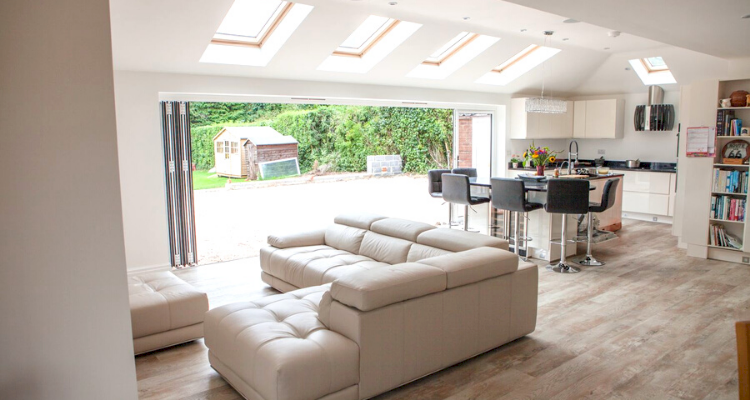
Applying for Planning Permission
If you need planning permission, you can apply through your local council or through the online planning portal. You can make the application yourself, or you can ask your architect or designer to do it for you.
It costs £206 to apply. You will need to check what documents your local council requires for a submission. Most local councils offer a support service with a small fee. This usually involves a meeting with a council employee. They can guide you through what you need and any potential problems.
Once your application is submitted, you will receive confirmation of the application. It will take around eight weeks for you to get an answer. During this time, anyone can lodge objections to your plans. If you are rejected, you can see the reasons why. You can then amend your plans and reapply.
Building Regulations for a Rear Extension
When you have large-scale work done on your home, like an extension, you will need to comply with building regulations. This will involve site visits and paperwork. Most builders will be able to arrange and complete this for you. However, make sure you confirm with your builder that they will be doing this, as you are ultimately responsible.
Depending on the scale of the work it will cost £50 to £100 to get certified. There will usually be two site visits so that the quality of construction and the wiring and plumbing can be checked. You will receive your certification in the mail after work is completed.
Rear Extension Flooring Cost
When you get an extension built, it is like a blank slate on which you can choose any finish. When it comes to flooring, you can choose from any option.
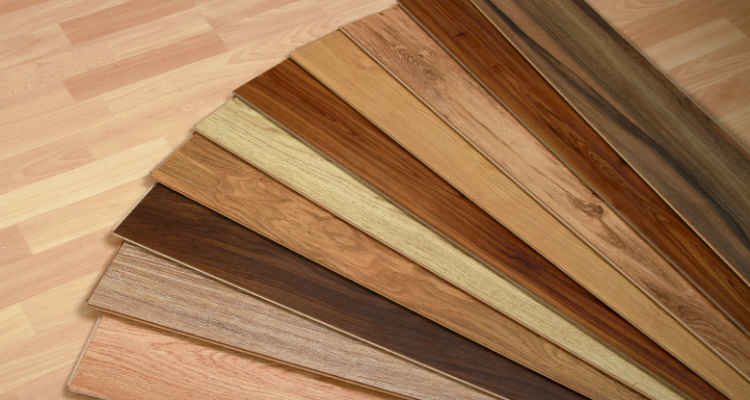
There are so many options to choose from when it comes to flooring, depending on your budget and tastes:
Keeping Extension Costs Low
This is a big project to undertake, and it brings a lot of costs with it. Here are some rear extension ideas that can help to keep your costs down.
Simple Design
The design of your space will have a big impact on the cost. For example, any rooms that have anything other than 90-degree angles in them will cost extra. Try to keep your plan as simple as possible, and this will help to keep costs low.
Off-the-shelf Furnishings and Fittings
Where possible, try to use standard sizes for your furnishing and fittings. As soon as you start choosing more bespoke items, your costs will begin to rocket.
DIY The Parts You Can
There are a lot of parts of this project that you can do yourself. Speak to your builder beforehand and negotiate which parts you can do yourself and when you will be doing the work. You can easily save around 30% of your labour costs by doing the easier parts yourself.
Avoid Complicated Groundworks
One of the fixed costs in any building project is the groundwork. The more expansive the footprint, the higher the base cost will be. Try to keep the new footprint as simple as possible. You can maximise your investment in the groundwork by building more storeys. This will reduce your extension costs per square metre.
Accurate Design and Plan
Paying for an architect to design your extension can seem like a large cost up-front on the project. However, it can keep your total costs down. Having a plan means you are less likely to make changes partway through. It also means your quote will be more accurate, and there will be less chance of miscommunication. All of these things can push costs up.
Choose Your Builder Carefully
If you are trying to keep costs as low as possible, then discuss this with your builder before you start. If your builder is experienced at working with small budgets, then they will be able to guide you in making a decision that will keep you on track.
Cost of Rear Extension Alternatives
If you are looking for ways to increase the living space in your home, there are a lot of options to consider. Which is best for you will depend on your budget and exactly what you are trying to achieve.
Side Extension Cost
These are a popular choice for terraced or semi-detached homes. Small side passageways can be used to expand existing rooms to make them more liveable. The average cost for a side extension is £30,000.
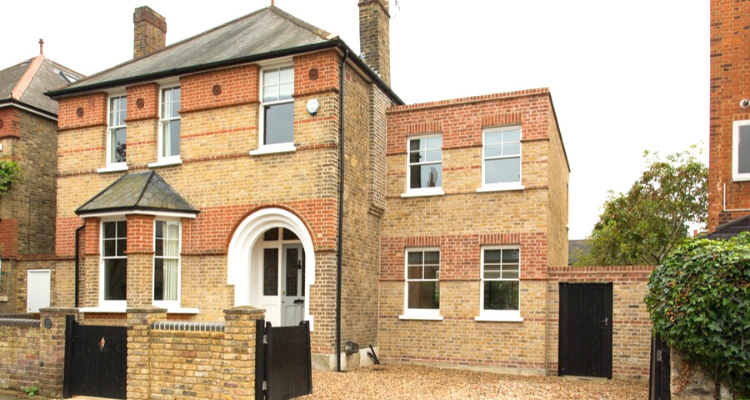
Pros
- ✔ Can maximise your existing space
- ✔ A more cost-effective option
- ✔ Can easily add skylights
Cons
- ✖ May need a party wall agreement with neighbours
- ✖ Removing an external wall can be a big job
Conservatory Cost
Getting a conservatory extension is a cheaper and easier way to gain space in your home. A conservatory can be exempt from building regulations if it meets specific criteria (for example, it’s separated from the house by external-quality doors and has independent heating). If you remove that separation or extend the main heating system into it, full building regulations will apply and it’s treated like any other habitable room.
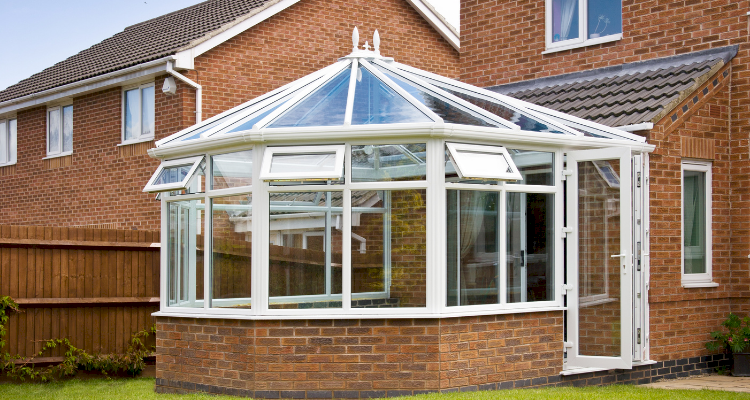
Pros
- ✔ Quicker and easier than an extension
- ✔ Cost-effective
- ✔ Range of options
Cons
- ✖ Can be less useful than an extension
- ✖ The temperature can be uncomfortable in summer and winter
Glass Room Cost
Glass rooms are similar to conservatories but have more glass in them. There is no brickwork at the base, and the panes of glass are much larger. The cost of a glass room varies between £15,000 and £70,000.
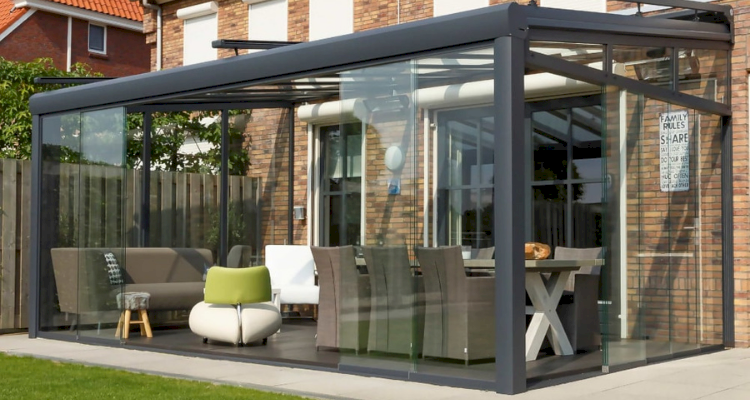
Pros
- ✔ Great views
- ✔ Contemporary style
- ✔ Bespoke
Cons
- ✖ High cost for the extra space
- ✖ Can be cold in winter
Loft Conversion Cost
A loft conversion allows you to create extra room in your home by converting your attic space into a liveable space. There are several different types of loft conversion that create different amounts of space. The average cost of a loft conversion is £40,000, although you can get a basic loft conversion for as little as £15,000.
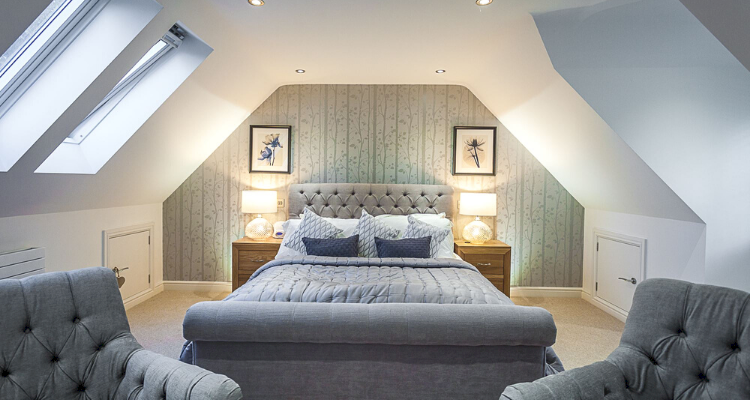
Pros
- ✔ More living space without sacrificing garden space
- ✔ Good return on investment in terms of home value
Cons
- ✖ Not all homes are suitable for a loft conversion
- ✖ May have to spend a lot to get a usable space
Pre-fab Extension Cost
A prefab (flat-pack) extension is one that is built offsite and then lifted into position. They can be made of a range of different materials. Large ones may need to be fitted in sections. The average cost is £2,000 per m².
Pros
- ✔ Less disruption at home
- ✔ Quick installation process
Cons
- ✖ Limited design options
Checklist: Hiring Rear Extension Contractors in the UK
When you are hiring a contractor to build your extension, you will likely hire a builder to manage the whole project. There are a lot of moving parts, and it is important to have the right person for the job. Otherwise, it can become more expensive and take longer than needed.
Here are some things to look out for.
- They should be able to show you examples of previous work they have completed.
- They should be happy to let you speak to previous clients.
- Your contractor should be able to give you a breakdown of the expected costs. Don’t expect this on the day. They will likely have to go away and calculate all the costs to give you a realistic quote.
- A good sign is a contractor who takes notes when you discuss what you want to do. It means that things are less likely to get forgotten about.
- Check who will be responsible for organising building control visits. Most contractors will do this, but make sure it is clearly agreed as it is your responsibility.
FAQs
What Roof Options Can I Have on a Rear Extension?
The best options for you normally comes down to your budget as well as how you want the extension to look. Also, the right choice depends on what works best with the rest of your house.



